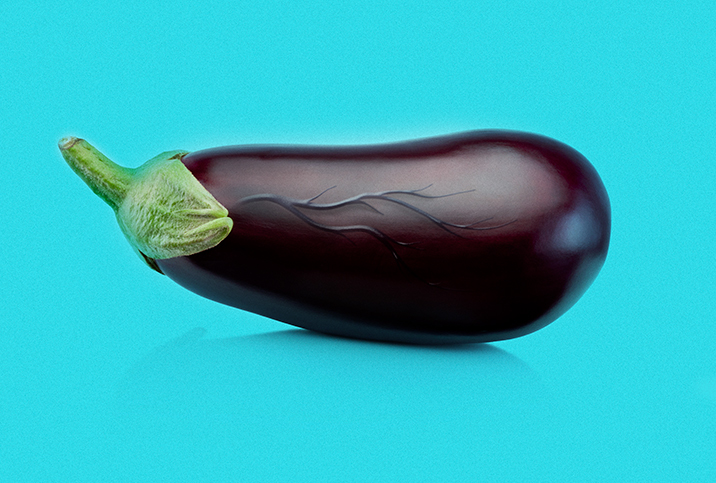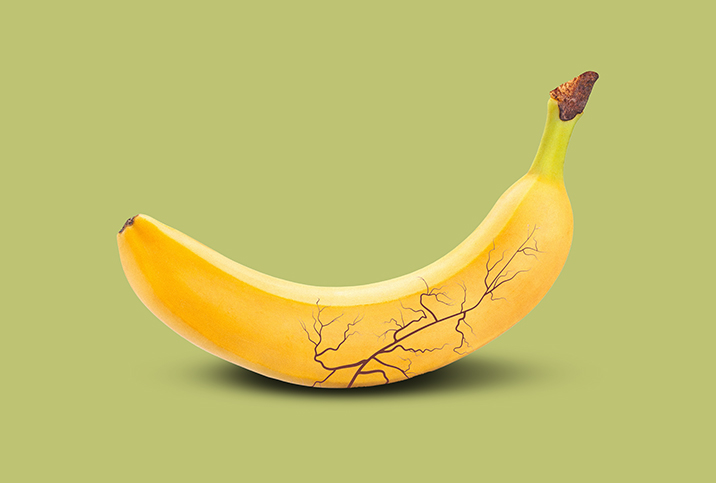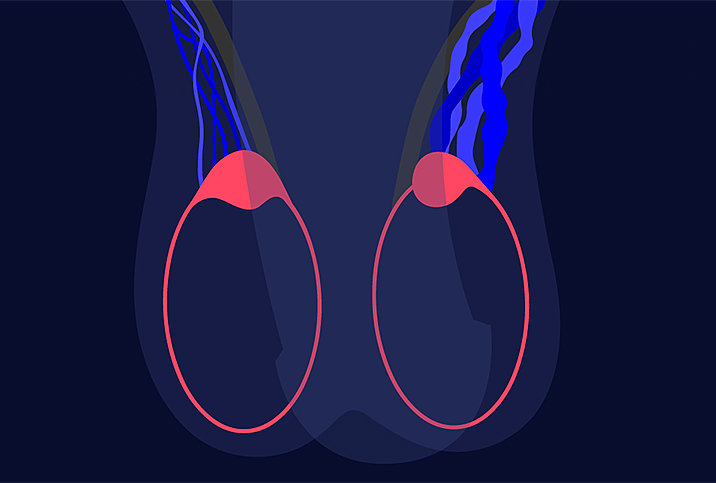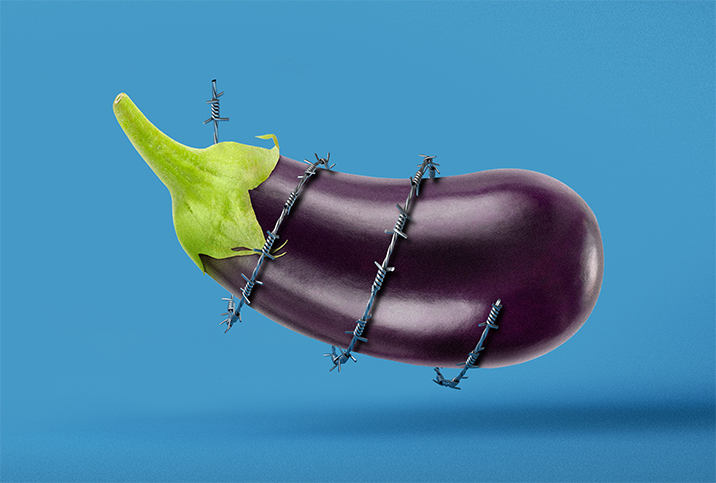Why Is My Dick So Veiny?
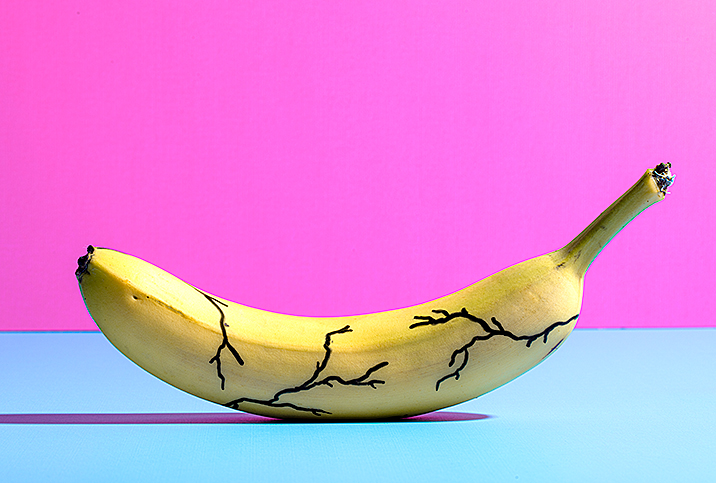
We know dicks come in every shape and size imaginable, but there's plenty of variation when it comes to the veins inside your penis, too. Generally speaking, a noticeably veiny dick—whether soft or stiff—is nothing to worry about, but there are a few factors to determine whether your penile veins warrant a trip to the doctor.
Reasons why your penis is so veiny
First, an anatomy lesson. There are two main veins inside the penis: the deep dorsal vein and the superficial dorsal vein, which are separated by connective tissue. Because age and genetics both impact the thickness of your skin, the appearance of these veins can change slightly throughout your life span, so if you do notice minor differences, try not to worry.
It's during the process of erection that your blood vessels—which include veins, arteries and capillaries—truly fire into action. When you're aroused, around 130 ml of oxygenated blood pumps through your arteries to the three chambers of spongy, erectile tissue inside your penis, making it swell and grow hard. Meanwhile, your veins narrow to trap the blood. When your erection is over, the veins then drain the blood back to your heart.
Because boners require plenty of internal heavy lifting, it's usually the case that the veins in your penis will appear larger and more visible during and immediately after sexual activity—and, yes, that includes masturbation.
'Having a veiny penis is only a medical problem if the veins hurt.'
However, it's a common misconception that veins are always more visible during an erection. "Blood flow through the penis influences vein size," explained Paul Turek, M.D., a Los Angeles–based urologist and founder of the Turek Clinic. "Interestingly, the blood flow through the penis is higher when flaccid than erect, which means that penile veins are typically more visible to the eye with soft penises."
Even seasoned medical experts around the world are still working to learn more about the inner mechanisms of dicks. In 2013, an article published in the Journal of Andrology analyzed dissections of dozens of male cadavers—yup, that's a dead human body—concluding there are additional venous channels within the penis that often went unacknowledged or unexplained in existing research. "The venous anatomy of the penis is very different from that of any other body part," Turek said. "The penile vascular system is about as complex as that found in heart valves."
A handful of other factors also influence the visibility of the veins inside your penis, from the thickness of your skin to how often you masturbate (excessive jerking off can cause irritation, which can, in turn, increase the prominence of the veins). Because there's so much variation, it's important not to worry if your dick looks slightly more veiny than usual—if anything, it tends to be a sign that your blood vessels are doing their job.
When a veiny penis turns painful
It's a different story if you're feeling pain downstairs. "Having a veiny penis is only a medical problem if the veins hurt," continued Turek. "This is called penile Mondor's disease, and is typically an indication of blood clotting temporarily within the veins. It can happen with mild penile trauma, injury during sex or from using sex toys."
According to a 2014 article published in Basic and Clinical Andrology, "patients usually feel the superficial vein of the penis like a hard rope, and present with complaints of pain around this hardness." The good news is that "diagnosis is usually easy with physical examination," and it might be more common than you think—2019 statistics estimated 1.4 percent of men experience it at some point in their lives, and many more go undiagnosed. "Penile Mondor's disease usually resolves itself over time," Turek explained, so don't panic even if you do experience it. Consult a medical professional, who is then likely to prescribe antibiotics.
'The key takeaway is that your dick will look different from others and will even change throughout its lifetime, based on plenty of factors that even some lifelong experts still don't fully understand.'
It's also worth keeping an eye out for other symptoms if you're worried about the appearance of your penis—changes in color (especially redness) and unusual marks or blemishes can signal the onset of an STI.
Varicoceles are another common genital-related vein issue, although these are enlarged veins in your scrotum as opposed to the shaft of the penis itself. A 2016 article in the Asian Journal of Andrology found varicoceles occur in around 15 percent of healthy men and 35 percent of infertile men, but the authors said the link with fertility "has not been established conclusively."
Generally, varicoceles develop throughout puberty and can be caused by issues such as reduced blood flow, swollen lymph nodes and testicular injury. Again, they're no cause for concern unless they're painful or found alongside other symptoms, such as low sperm count or a lump on the testicles. Surgeries, including varicocelectomy and vein removal (sometimes called "stripping surgeries"), as well as conditions like genital lymphedema can leave a lasting impact on the appearance and function of veins in the penis, such as general swelling and pain during sex. However, these changes differ based on the individual, and if there are any surgical side effects to worry about, they'll be thoroughly explained by medical professionals.
The takeaway on veiny dicks
For the average penis owner, the key takeaway is that your dick will look different from others and will even change throughout its lifetime, based on plenty of factors that even some lifelong experts still don't fully understand. The veins in your junk can be unpredictable, but unless they're painful or found alongside other symptoms, such as a change in penis color, they're nothing to worry about. Think of them as a nod of reassurance that your dick is in good working order.












